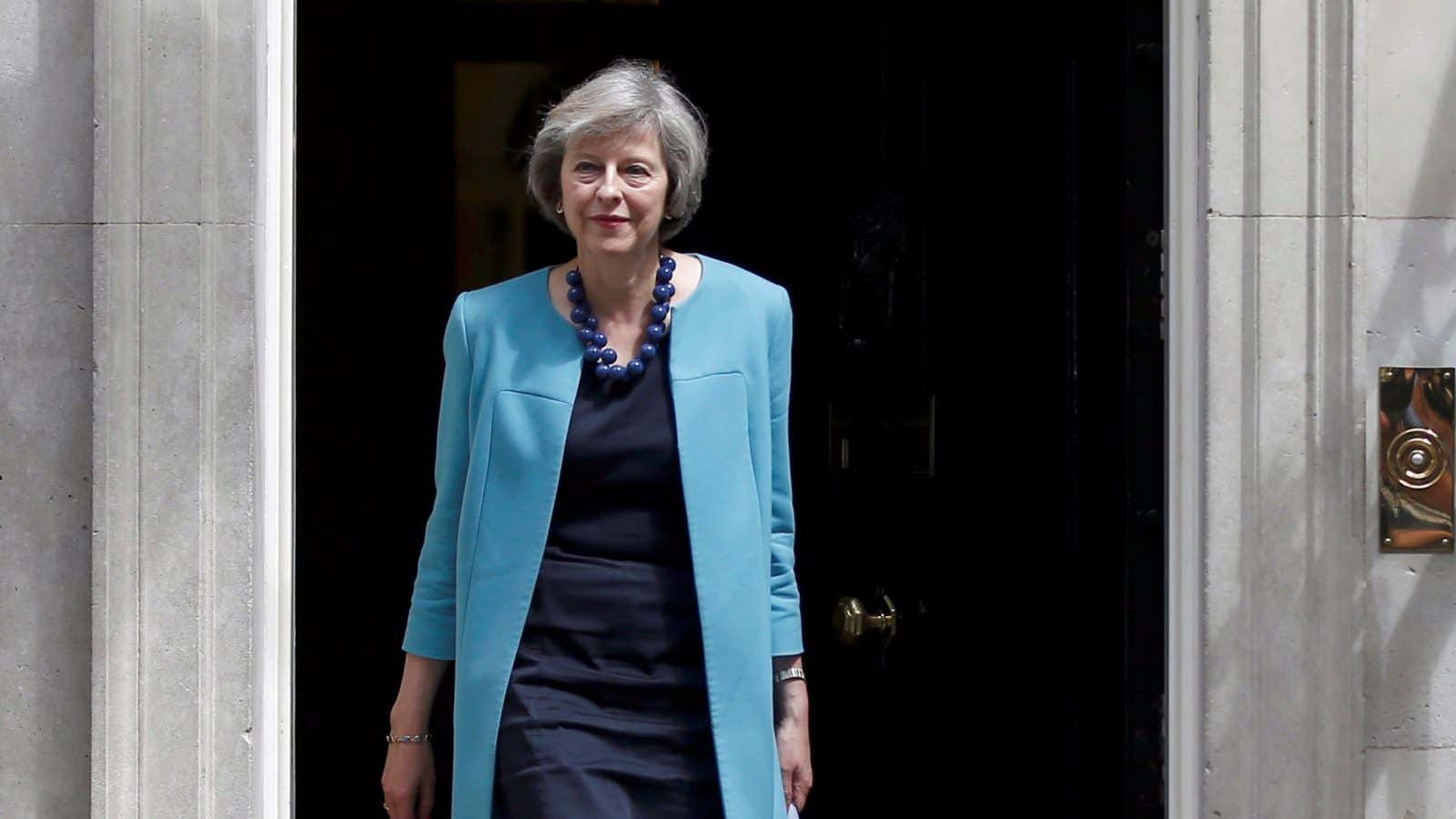Even if the last couple of weeks have been some of the most chaotic in recent British political history, the Brexit referendum vote is if nothing else a sign that democracy is alive and kicking in the UK. Yet the UK’s next leader will be anointed this week without an election.
Theresa May will take over from the current prime minister, David Cameron, tomorrow (July 13).
Since 1900, 13 prime ministers out of 22 have come to power without an election. Seven have come since the Second World War. It’s the second time in the past decade that the role has transferred in this way. (Tony Blair, the Labour prime minister, handed over to Gordon Brown in 2007.) The reason is because of living in a parliamentary democracy, where one votes for parties rather than individuals.
In countries like France and the US, voters elect a president, a head of state who has an individual mandate for a fixed term, which separate from the legislative body. With parliaments, voters set the composition of the legislature, whose job it is to select a government.
In the UK, one of the two biggest parties—Labour or the Conservatives—usually gains control of the House of Commons, the main legislative body in the UK. When Brits vote, they are not electing a prime minister but electing their local Member of Parliament. A party needs a majority in Parliament to run a government, and its leader then becomes prime minister.
During the country’s recent referendum on whether or not to leave the EU, Cameron campaigned to stay. When the country voted to leave, he resigned—as leader of his party—saying he would stay in post until around October to give time for their to be a Conservative Party leadership contest.
Because it was the party that was elected and not Cameron himself as an individual, that doesn’t trigger a general election. Cameron, in fact, remains an MP of his constituency and sits in the House of Commons. The Tories still have their five-year mandate until the next election. (One can be called earlier if the government chooses, though that’s another story.)
Cameron was expecting the contest to replace him as party leader to take months. But challengers fell away quite quickly—especially those that wanted Brexit—leaving only May. So she becomes the leader of the party—and therefore prime minister—without an election, either of the Conservative Party membership or the country at large.
This is true of even the most unstable parliamentary democracies, and can lead to some odd outcomes. During the euro zone’s debt crisis, for example, Silvio Berlusconi’s government fell in Italy in 2011 and the country appointed a “technocratic” government led by Mario Monti, who wasn’t leader of any of the main parties. This was possible because the parties voted to back him and his government.
So what will happen on Wednesday with Cameron and May? Queen Elizabeth gets involved.
The formation of governments adheres to several long-established conventions for the monarchy as the head of state in terms of appointing heads of government and dissolving parliament.
Cameron will leave Downing Street and go to Buckingham Palace to resign. Soon after, May will arrive at the Palace and be asked by the queen to form a new government. Here’s what it looked like when Blair and Brown did it nine years ago:
